XR Digital
At XR Digital, we blend creativity, technology, and strategy to deliver unparalleled digital solutions. Explore the possibilities with us as we push the boundaries of innovation and transform your vision into reality.
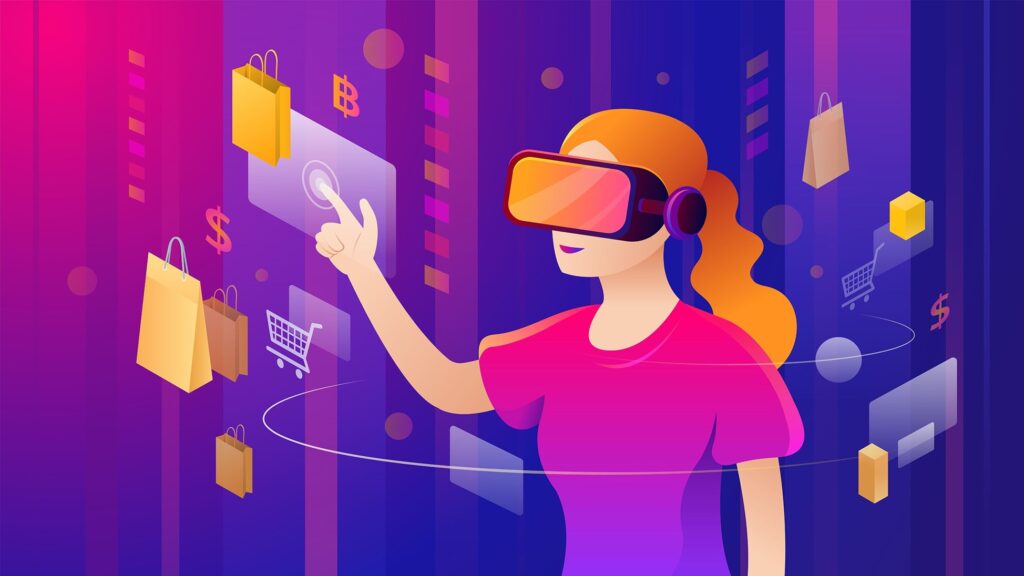
In the dynamic realm of marketing, Virtual Reality (VR) has emerged as a revolutionary force, breaking free from its origins in gaming and entertainment to redefine consumer engagement. By transporting individuals into immersive virtual environments, VR transcends traditional marketing methods, inviting active participation in brand narratives.
It goes beyond showcasing products; it elicits emotional responses and sensory experiences, forging deeper connections. This paradigm shift allows brands to create interactive journeys, from virtual product exploration to personalized brand narratives. As we navigate this exploration of VR in marketing, uncovering applications from virtual showrooms to personalized campaigns, we unveil not just its current impact but also the boundless potential it holds for reshaping brand-consumer interactions.
In a world where attention is scarce, VR emerges as an innovative beacon, urging marketers to reimagine how they connect with their audiences in this immersive realm where boundaries dissolve, and brand experiences transcend the ordinary. Welcome to the future of marketing—Welcome to Virtual Reality.
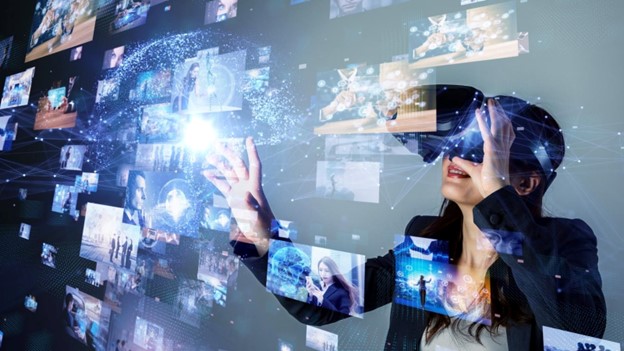
Virtual Reality (VR) in marketing refers to the strategic utilization of immersive virtual experiences to engage and connect with consumers. This cutting-edge technology creates simulated environments that users can explore through specialized VR devices, providing a heightened level of interaction and immersion. In the marketing context, VR is employed to transform traditional approaches, allowing brands to offer consumers a more dynamic and personalized experience.
Virtual Reality in marketing involves the creation of virtual spaces where users can actively participate in brand narratives, product demonstrations, or interactive campaigns. It goes beyond traditional advertising methods by immersing individuals in a three-dimensional, computer-generated environment. This immersive experience is designed to evoke emotional responses, enhance brand recall, and foster a deeper connection between the consumer and the brand. Also learn about Virtual Reality in health care and Virtual Reality in social media
Unity is said to be the most used application in creating VRs, and games. Unity is used to create more than half of all mobile applications, and, for the 1000 most popular applications, its share is 65%.
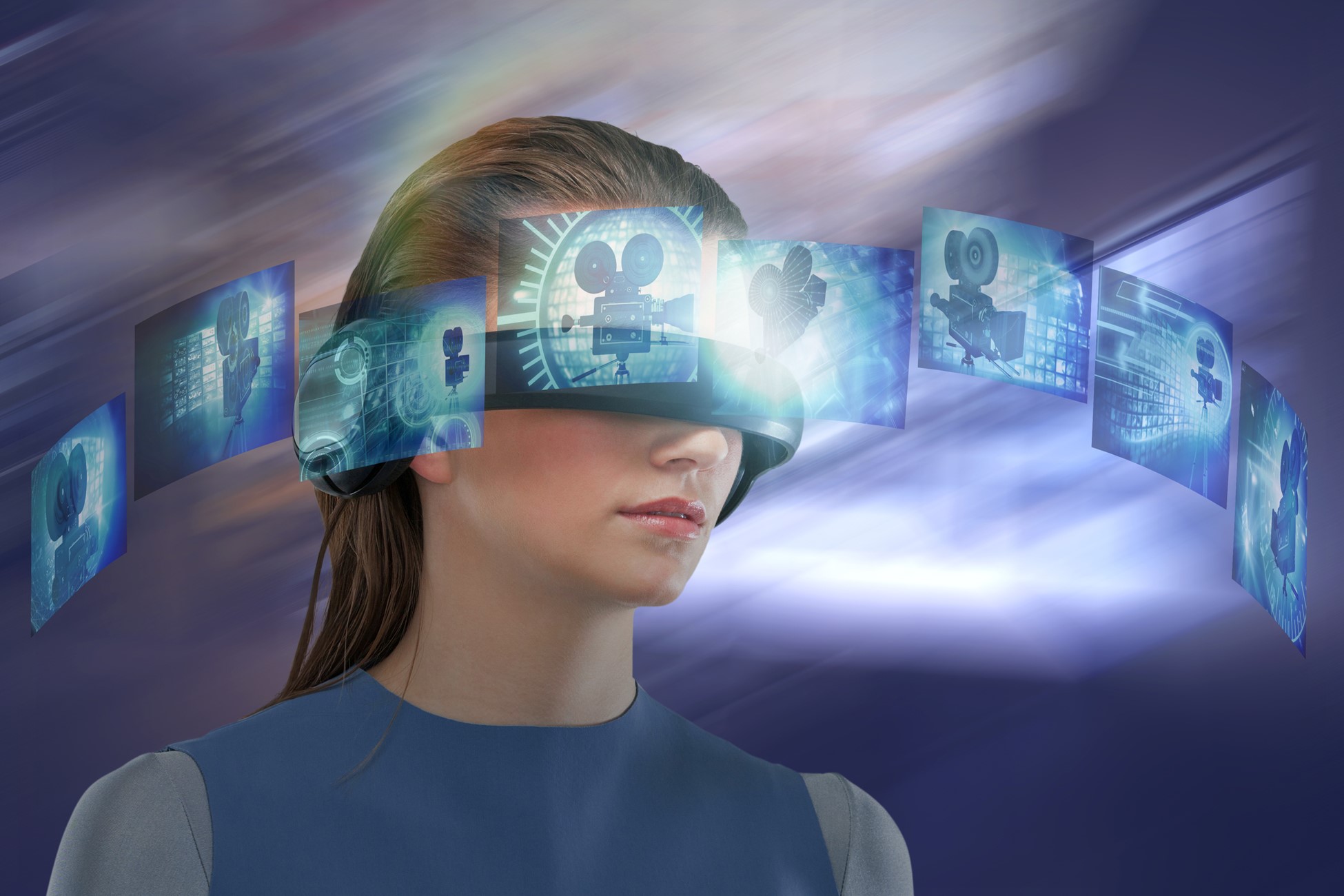
In recent years, the digital disruption of VR has driven brands to rethink their marketing efforts.
In a world before VR, businesses would rely on brochures, blimps, and billboards to communicate with customers. But in modern times, technology is our primary means of contact, which puts pressure on brands to think differently about how they win attention.
In fact, in a recent survey, it was reported that 61% of shoppers prefer retailers to include VR technology in their products. That’s a staggering number of customers and just goes to show how VR has made its mark in the world of marketing.

Virtual Reality (VR) in marketing introduces a range of features that set it apart from traditional marketing methods. These features leverage immersive technologies to create engaging and memorable experiences for consumers. Here are key features of VR in marketing:
VR provides a fully immersive experience by transporting users into a virtual environment, allowing them to actively engage with the content and feel a sense of presence within the virtual world.
VR enables the creation of 360-degree content, allowing users to explore a full range of perspectives. This is particularly valuable for virtual tours, product demonstrations, and interactive storytelling.
Marketers can craft interactive narratives within VR environments, allowing users to make choices and shape the direction of the story. This dynamic storytelling enhances engagement and personalization.
Brands can showcase their products in a virtual space, enabling users to interact with and experience the features of a product as if they were physically present. This is especially beneficial for industries like real estate, automotive, and retail.
VR facilitates the creation of virtual showrooms where users can explore products or services in a simulated environment. This is effective for showcasing a wide range of offerings without the need for a physical space.
Brands can design immersive marketing campaigns that go beyond traditional advertising. These campaigns create memorable experiences, leaving a lasting impression on consumers.
VR experiences enhance brand engagement by providing a memorable and interactive encounter. The immersive nature of VR contributes to better brand recall, as users are more likely to remember experiences they actively engaged with.
VR allows for personalized experiences based on user preferences and interactions. This customization creates a sense of exclusivity, fostering a stronger connection between the brand and the consumer.
VR platforms can collect valuable data on user behaviour within virtual environments. Marketers can analyse this data to gain insights into consumer preferences, allowing for more targeted and effective marketing strategies.
VR can be utilized for hosting virtual events, product launches, or trade shows. This enables global participation and engagement, reaching a wider audience without the limitations of physical space.
Incorporating gamification elements into VR experiences makes marketing more interactive and enjoyable. This can include challenges, rewards, and other game-like features that enhance user engagement.
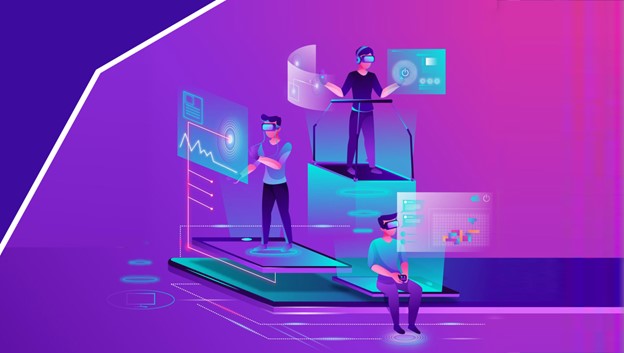
Virtual Reality (VR) in marketing offers a myriad of advantages, transforming the way brands engage with consumers and enhancing the overall marketing experience. Here are key advantages of integrating Virtual Reality into marketing strategies:
VR creates immersive environments that allow users to actively engage with a brand’s narrative, products, or services, resulting in a memorable and impactful experience.
The immersive nature of VR captures users’ attention and keeps them engaged for longer periods compared to traditional marketing methods, increasing the likelihood of message retention.
VR experiences tend to be more memorable, leading to better brand recall. Users are more likely to remember a brand that provided them with a unique and immersive experience.
VR allows brands to reach a global audience without physical limitations. Virtual events, product launches, or showrooms can be accessed by users worldwide, expanding a brand’s reach and impact.
Virtual Reality enables users to interact with products in a virtual space, providing a more realistic and detailed view. This is particularly valuable for industries where physical product testing is challenging.
VR experiences can be tailored to individual preferences, creating a personalized and customized journey for users. This enhances the sense of exclusivity and relevance, fostering a stronger connection with the brand.
Incorporating gamification elements into VR experiences adds an interactive and enjoyable dimension to marketing campaigns. This can increase user participation and enjoyment.
VR allows for the hosting of virtual events, trade shows, or product launches without the costs associated with physical venues, travel, and accommodations. This can result in significant cost savings.
Users can share their VR experiences on social media, creating opportunities for content to go viral. The social sharing aspect enhances brand visibility and can lead to increased user-generated content.
VR experiences can be accessible to users with VR headsets or even through simpler devices like smartphones. This broadens accessibility and ensures a wider audience can engage with the brand’s virtual content.
VR is adaptable to a wide range of industries, from real estate and tourism to retail and
automotive. Its versatility allows for creative applications across diverse marketing scenarios.
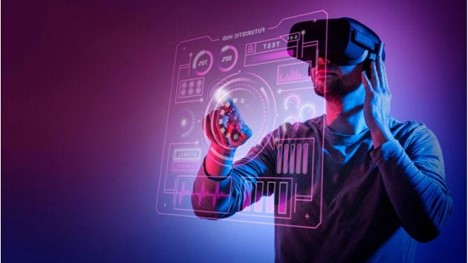
While Virtual Reality (VR) in marketing offers numerous advantages, it also comes with certain disadvantages and challenges. Marketers need to consider these factors for a comprehensive understanding of the technology’s impact on marketing strategies. Here are some disadvantages of Virtual Reality in marketing:
The initial setup costs for VR technology, including hardware, software development, and content creation, can be substantial. This may pose a barrier, especially for smaller businesses or those with limited marketing budgets.
Implementing and maintaining VR systems requires technical expertise. Marketers and businesses may face challenges in managing the technical complexities associated with VR, including software updates and compatibility issues.
Not all consumers have access to VR devices, and the adoption rate of VR technology is not universal. This can limit the potential audience for VR marketing campaigns, especially in regions or demographics where VR technology is less prevalent.
Some individuals may experience motion sickness or discomfort when using VR devices, especially during prolonged or intense VR experiences. This limits the applicability of VR marketing for certain audiences.
Creating high-quality, immersive VR content can be time-consuming and resource-intensive. Developing content that effectively communicates a brand message within the constraints of VR technology requires specialized skills and resources.
The effectiveness of VR marketing campaigns relies on users owning or having access to VR hardware. If the adoption of VR devices remains limited, the reach and impact of VR marketing may be constrained.
Not all consumers have access to VR devices, particularly in economically disadvantaged or remote areas. This creates disparities in accessibility and limits the inclusivity of VR marketing initiatives.

Virtual Reality (VR) in marketing presents exciting opportunities marked by immersive brand experiences and enhanced engagement. However, challenges such as high implementation costs, technical complexities, and potential user adoption limitations must be carefully navigated. Addressing content development, cybersecurity, and ethical considerations is essential. Success in VR marketing requires a delicate balance between innovation and practicality. As technology progresses, the potential for VR to reshape brand-consumer interactions remains promising.
technologies, including Virtual Reality (VR). VR has transcended its gaming and entertainment origins to redefine consumer engagement. XR Digital is at the forefront of incorporating VR into its suite of digital services, understanding that VR’s immersive experiences offer more than just product showcases; they forge emotional connections and sensory experiences, elevating brand narratives.
By seamlessly integrating VR into our services, XR Digital empowers brands to create interactive journeys, from virtual product exploration to personalized campaigns, thereby reshaping the landscape of brand-consumer interactions.
Virtual Reality (VR) in marketing involves creating immersive, three-dimensional experiences for users. It goes beyond traditional advertising by allowing consumers to actively engage with brand narratives and products in a virtual environment, creating a more memorable and interactive experience.
VR can enhance brand engagement by providing consumers with immersive experiences that leave a lasting impact. Brands can use VR to create virtual showrooms, interactive product demonstrations, and personalized experiences, fostering a deeper connection with consumers and promoting brand loyalty.
Implementing VR in marketing comes with challenges such as high implementation costs, technical complexities, and potential user adoption limitations. Marketers also need to address content development challenges, cybersecurity concerns, and ethical considerations to ensure the success and responsible use of VR campaigns.
VR enables brands to host virtual events, product launches, or trade shows, reaching a global audience without the constraints of physical locations. This allows for cost-effective and inclusive marketing strategies that extend beyond geographical boundaries.
Various industries can benefit from VR in marketing, including real estate, tourism, automotive, retail, and entertainment. VR is adaptable to different scenarios, offering creative applications such as virtual tours, interactive storytelling, and immersive product demonstrations to enhance marketing efforts across diverse sectors.
At XR Digital, we blend creativity, technology, and strategy to deliver unparalleled digital solutions. Explore the possibilities with us as we push the boundaries of innovation and transform your vision into reality.